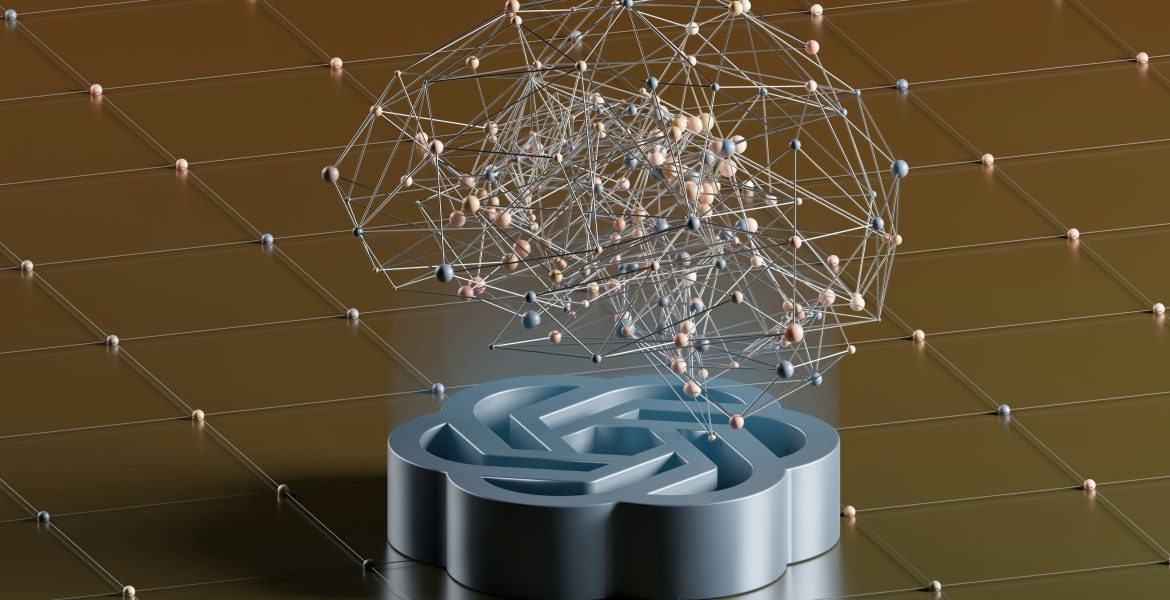Human-in-the-Loop AI: Balancing Automation with Expert Oversight

1. Introduction: Human + AI — Finding the Balance
Come on, let’s be real: artificial intelligence is no longer science fiction. It’s in the everyday — sometimes it works, sometimes it locks up. Hospitals use it, banks use it, and even your favorite online retailer probably used AI to automate some aspect of its business. The premise is simple: more speed, more accuracy, less error. But (and always there is a but), this wild rush into robot also implies to ask one question technology wonks can’t help but argue about: How much do we sacrifice in terms of control, and where do we insist on human touch? human-in-the-loop, expert feedback, AI trust
1.1. AI — What’s It Doing for Us, Really?
Step one first, first things first here’s the real deal on AI:
- Bowling menial work out: Who is going to spend the entire day glued to a computer monitor gazing at spreadsheets? Not machines. Get them to do the dirty work so that human beings can do smelly, creative work.
- Decision making based on information: If you’ve got numbers, you’ve got options — at least if you’ve got a decent AI system to trudge through the numbers and come up with something that’s at least worth serious consideration. It won’t do it for you, but it might give you the confidence to take the plunge.
- Improved customer support: Ever talked to a bot that actually assisted? (Fine, not always, but occasionally.) AI is what’s improving support lines rather than worsening them.
1.2. Why Waste Time with Human Overseeing?
And the catch is this: no matter how intelligent software gets, humans must stay in the loop. The machines may get smart, but occasionally they are also, uh, kinda dumb when it comes to actual-world curveballs.
- Critical thinking, not crunching: Computers can err. Gut, instinct, reading between the lines — these are still human assets. Break your neck trying to get an AI to cause the next big thing to happen without some gut nudging it into that space.
- Ethics are not a choice: Technology does not have ethics. Oh, that’s our job. You need actual humans to be all, “Hey, maybe we shouldn’t do that.”
- On-the-fly adjustment: The world changes, things switch around, and your great AI model is now obsolete. Human experts go through this adjustment and get things to change before everything goes totally wrong.
In short, the only thing that one can gather from the last decade is this: smart growth with AI is harmony, not mindless automatism. Catch the proper harmony between allowing algorithms to go wild and observing brains providing advice. That is where the firms are going to really flourish, not just creak along, as the virtual world continues to grow.
2. From Crude Mechanisms to Intelligent Bots of Automation

We all consider automation to be some kind of 21st-century magic, but seriously? This story began eons ago — way, way before anyone inserted “artificial intelligence” into a slide deck or tried to woo investors with jargon. Our journey from crude machinery to bells-and-whistles offerings out there in the market today hasn’t been a walk in the park.
2.1. Tech’s Impact on Human Work — A (Very) Brief History
- Hands & handmade devices: C’mon — no one ever wanted to break their back if they didn’t need to. Even in ancient times, humans did what humans had to do and created rough simple devices out of necessity just to make backbreaking work less backbreaking. Anything for heading home a bit earlier, eh?
- Steam, steel, and the age of industry: And then came the steam engine. Suddenly factories are popping up on the market. Goodbye, solitary craftsman with workbench; hello, row after row of screaming machinery and widget-examining foremen. It was noisy, filthy, and kind of wonderful.
- Computers crash the party: Flash forward to the late 1900s — the computers now work. Remember mountains of file cabinets and seas of paper? So gone. Word processing and spreadsheet devoured that, and you could’ve heard the collective sighs of relief echoing across the office.
2.2. AI’s Role in the Work Jungle Today
Artificial intelligence isn’t just lending a hand — it’s rewriting the job description. Here’s a quick rundown of the good, the weird, and the jaw-dropping:
- Machine learning: These days, algorithms gobble up piles of data, spot trends you’d never notice, and spit out predictions that sometimes feel spooky. Less slogging through stats, more “aha!” moments — with human-in-the-loop, expert feedback, AI trust in the background.
- Robots for the boring stuff: Virtual assistants, chatbots — if only, but lo, responding to your queries, taking your complaints, even scheduling appointments you never requested.
- Big data on steroids: Billions of data used to be a headache. Now? The right software makes all the math moot so you finally have some control over what customers actually want — or at least the illusion thereof.
- Physical robots: Not all software, mind you. We’re in the factory where real robots do the dirty, mundane work. Warehouses whir with miniature machinery zipping down aisles. Cheap? Not always. Efficient? You can bet.
Businesses are forever looking for the next magic bullet, perhaps it’ll make them great — or at least help them remain in the game. The problem is, though, whenever you “automate,” there’s some new ache to contend with. Yet somebody must be the adult in the room, so to speak, to ensure that the technology does not get the best of us or settle for less of what it can do to move forward a little faster. That is, human beings are not yet obsolete.
4. Real-World Applications: How Humans and AI Can Actually Work Together
Let’s not kid ourselves — AI is not running the world, but it sure is making life a whole lot simpler in some pretty unexpected ways. Instead of automating away jobs, smart automation is empowering masters with new tools and enabling them to concentrate on the creative, high-value work. Here are a couple of real-world examples from the frontiers to show how that works out in practice.
4.1. Where AI & Humans Co-Operate: Healthcare, Finance, Industry
- Healthcare: AI is a diagnostic revolution. Machines like IBM Watson now assist physicians with scanning stacks of data quickly, giving possible diagnoses. Think about radiology: by feeding CT and MRI scans through trained models, radiologists can be more efficient and (occasionally) catch things that would have otherwise missed. But the doctor still makes the final call — AI simply shows the possibilities. human-in-the-loop, expert feedback, AI trust
- Finance: It’s not just robo-advisors and chatbot cashiers. Creditors and banks now use AI to automatically approve loan applications, cutting half the wait time for customers. Investment recommendations are spit out by the algorithm, but still, it is the human money planner who makes the decision and advises clients.
- Industry: Firms and storage facilities are adopting predictive maintenance. While sensors pump machine information into AI in real-time, businesses can recognize issues prior to the breakdown and rearrange service accordingly. On the shop floor, AI keeps the process under control, enabling employees to focus on difficult issues rather than pointless monitoring.
4.2. Segmenting the Functions: Human & Machine
- Human as the final authority: No matter how ruthless the software, humans still make significant, innovative decisions. Intuition, instincts, and “gut feel” are things you can’t code — yet.
- AI as a sidekick: Meanwhile, the algorithms do their behind-the-scenes work, processing mountains of drudge, mind-killing tedium. By removing the grunt work, they make it possible for experts to do what precisely needs a thinking mind.
5. Ethics & Society: Who’s Really Calling the Shots?
You can’t put trust on autopilot — or at least, not yet. Every time we automate a new process with AI, we’re faced with issues of fairness, privacy, and responsibility that are uncomfortable to think about.
5.1. The Dangers of Going on Autopilot
- Data-driven models are biased, sometimes yielding outputs that are unfair or just plain wrong.
- Allowing AI to go wild, with little or no regulation, is the equivalent of decreased transparency. People become disconnected from decisions being made — the gate is open to privacy infringement and customer right trampling.
5.2. Establishing a Safe & Ethical AI Workplace
- Good fences make good neighbors — clear processes for human and technical governance must be established to keep machines in line.
- Upskilling is included. Spilling personnel to man new equipment is only half the battle; educating emotional intelligence and empathy preserves the human element in an age of technocracy. human-in-the-loop, expert feedback, AI trust
6. The Future of Human–AI Partnership: What’s in Store?
As artificial intelligence continues to change minute by minute, the future of human and computer partnership has some significant rewrites on the horizon. Let’s peer into the future and see what awaits this partnership, and how we might end up with a more balance balance of humans and machines.
6.1. Where Technology Is Going — And What That Means for Work
You can trust AI to continue revolutionizing the world of business, and even the daily world, in the years to come. Here’s what’s in store:
- Incorporation into daily life: Automation will no longer be in the background. Increasing numbers of companies will integrate AI into their daily lives, applying it to automate the drudgery so actual employees can focus on more, and bigger, creative work.
- Adaptive learning systems: AI won’t simply take orders; it’ll learn from users and provide tailored solutions. The benefit? Working with technology will be more intimate and actually valuable.
- Cross-disciplinary innovation: Disciplines are already starting to converge. Soon enough, innovations in everything from psychology to cybernetics will be pumping into smarter AI systems — and those systems, in turn, will be more capable of working with humans.
6.2. Finding the Balance: How to Build a Healthy Relationship
But as AI becomes increasingly powerful, we cannot afford to lag behind on the social and ethical side. Building a good, productive environment for both people and their computer partners will involve keeping some things at the forefront of our minds:
- Upskilling and training: The workforce should be capable of keeping up with the rate of change. Learning, workshops, and reskilling will be key to getting the labor force through whatever comes tomorrow.
- Informal collaboration: Inciting a brotherhood between men and machines — isn’t so crazy after all. Less human vs. robots, more of a team effort where every “colleague” learns tricks from the other.
- Ethics and openness: Having clearly stated, open rules of use for AI is paramount. It’s the best way to prevent misunderstandings, build trust, and ensure everyone — machine or human — is clear on what the rules are.
In short, there is every cause to anticipate an interesting future of human-AI accord. But real value will come only if we keep balance in its rightful position: leveraging the speed and accuracy of AI while keeping expert humans in the mix as shepherds, watchers, and masters of creative change.

Conclusion: How to Succeed at Working with AI
We’ve explored a whole range of issues in the human-artificial intelligence dynamic throughout this article. As technology continues to advance at breakneck speeds, it’s increasing clear that automation and expert oversight aren’t exactly a match made in heaven — instead, they literally complement each other. Here’s how that occurs, and what to keep in mind as you press on:
- Why we need AI in the workplace
- Maximizing efficiency: Leaving AI to do the tedious, time-wasting activities frees your brightest brains to focus on creative work and truly strategic work.
- Improving decision-making: With human plus machine, what you have at the end is typically better and more precise outcomes — especially when the situation demands last-ditch analysis and thoughtful rumination.
- Maximizing efficiency: Leaving AI to do the tedious, time-wasting activities frees your brightest brains to focus on creative work and truly strategic work.
- Practical advice for businesses
- Start with your needs: Don’t put all your eggs in automation without first taking a sincere assessment of what your business really needs. Pinpoint where AI will have the most impact, and start there.
- Invest in people: Investing in your people is not optional. Provide upskilling initiatives and continuous learning opportunities so your employees can work confidently with new machines and platforms.
- Establish clear oversight: Implement strict guidelines and regulations for management of any automated processes you implement. This enables you to manage risk and keep the gears of progress moving.
- Start with your needs: Don’t put all your eggs in automation without first taking a sincere assessment of what your business really needs. Pinpoint where AI will have the most impact, and start there.
- The case for active engagement
- Create a culture of collaboration: Develop a culture of trust and transparency within your teams. Allow people to generate ideas and work towards uncovering different methods for extracting the best from human-AI collaboration.
- Talk ethics, early and often: Put ongoing ethics conversation front and center. That way, you are getting out in front and beating any unexpected negative impact that may come to pass as new technology develops.
- Create a culture of collaboration: Develop a culture of trust and transparency within your teams. Allow people to generate ideas and work towards uncovering different methods for extracting the best from human-AI collaboration.
- Being agile
- Seize change: Tech isn’t waiting around, and neither should your plan. Stay flexible and open, ready to change direction when something comes up.
- Brazenly experiment: Don’t be afraid to try new ways and new technology. Usually, the best innovative solutions come in forms you least expect.
- Seize change: Tech isn’t waiting around, and neither should your plan. Stay flexible and open, ready to change direction when something comes up.
Finally, true co-operation between man and machine is not on the horizon somewhere down the line — but a reality of the modern global workplace. Let us begin building this highway: implement AI in your company, but then keep it in check with good expert guidance. Technology can improve the world — but only if we do so gingerly, intentionally, and with a willingness to keep on learning as we go.
Leave a Reply
You must be logged in to post a comment.